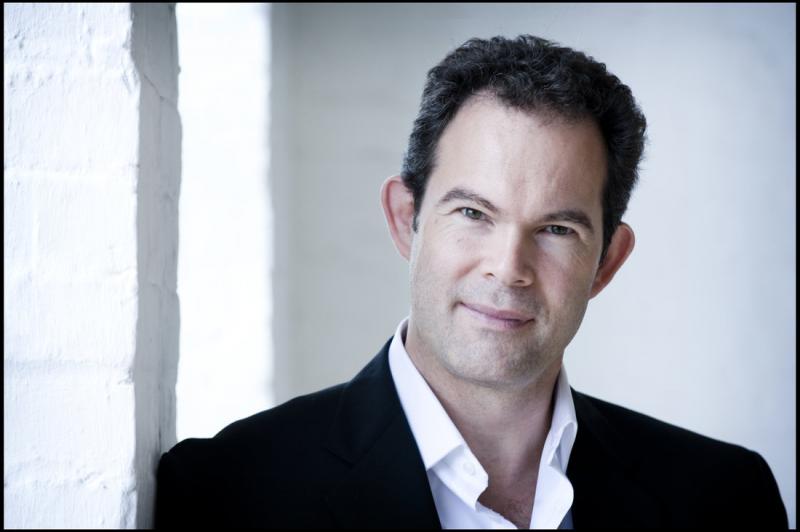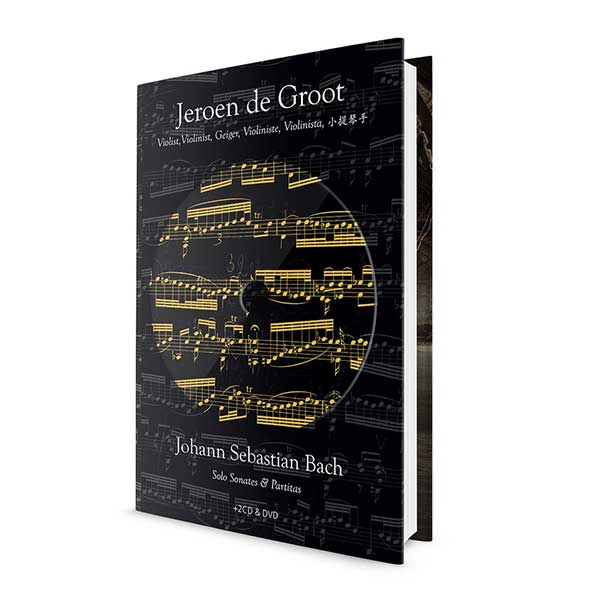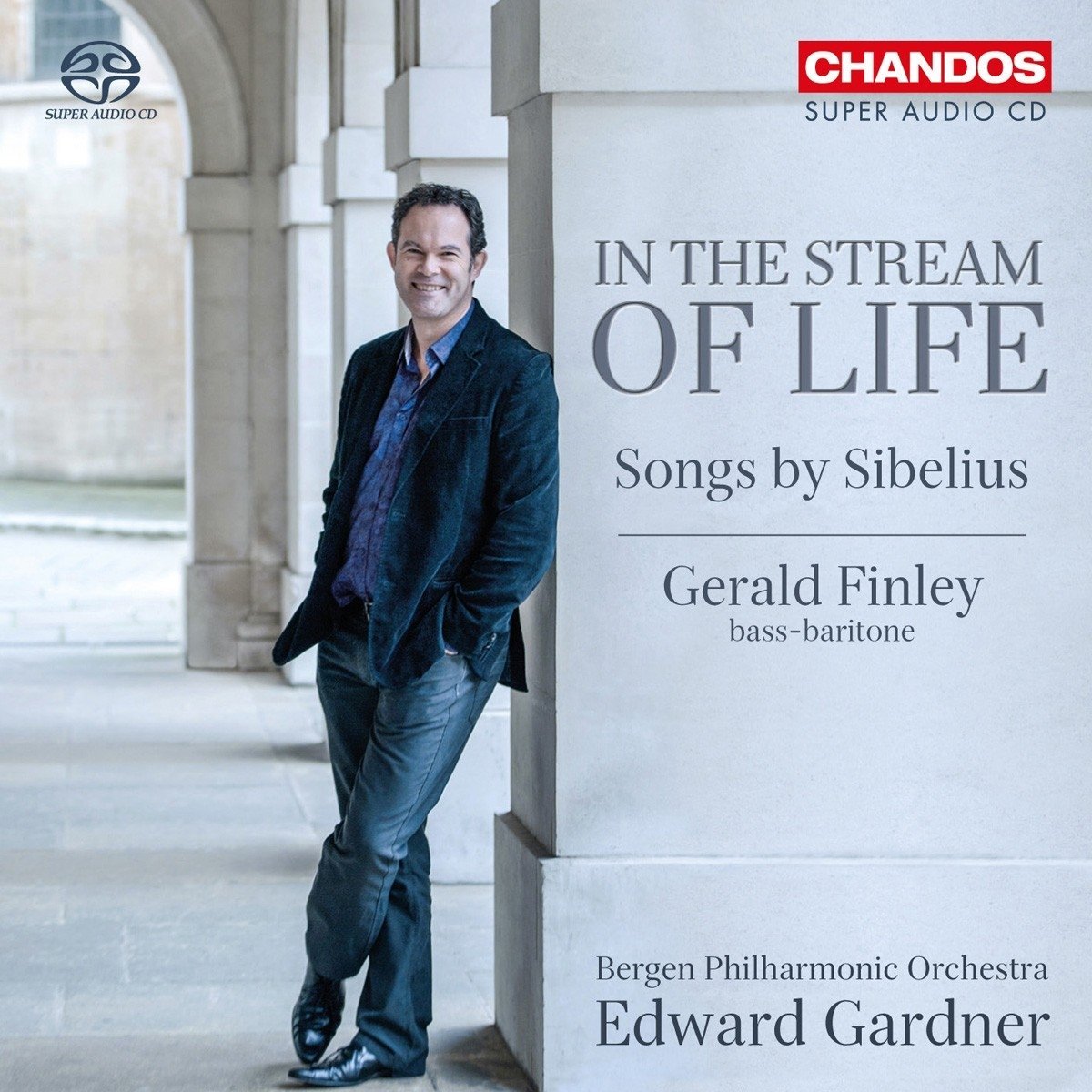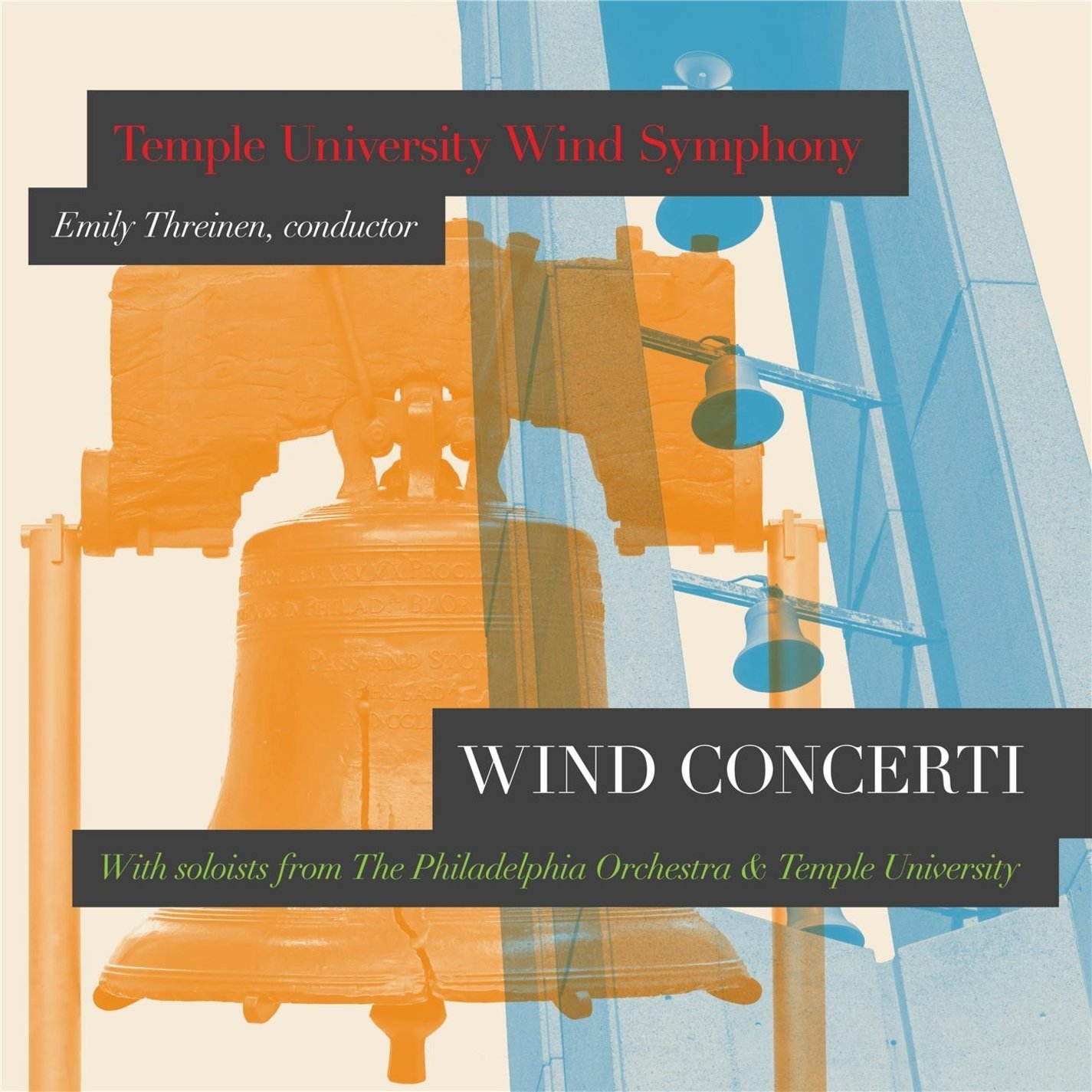Classical CDs Weekly: Bach, Sibelius, Temple University Wind Symphony | reviews, news & interviews
Classical CDs Weekly: Bach, Sibelius, Temple University Wind Symphony
Classical CDs Weekly: Bach, Sibelius, Temple University Wind Symphony
Baroque violin music, rare Finnish songs, and a set of wind and brass concertos

 Bach: Solo Sonatas and Partitas Jeroen de Groot (JDG Records)
Bach: Solo Sonatas and Partitas Jeroen de Groot (JDG Records)
Dutch violinist Jeroen de Groot recalls watching footage of Glenn Gould playing Bach's Goldberg Variations as a teenager, amazed by the brazen idiosyncrasies of Gould's pianism (“That night Gould showed me the way to Bach, and to myself”). Though Gouldian wilfulness isn't a destabilising influence on de Groot’s interpretations of Bach’s solo violin output. There's a very smart, shrewd musical intelligence at work here, de Groot's playing reflecting his lessons with the great Hungarian violinist Sándor Végh and showing a shrewd awareness of historically informed practice. Watch the interview segments on the bonus DVD and de Groot's sheer self-confidence is initially disconcerting, but spend a minute or so listening to him play and you’re immediately won over. Helped by a very close recorded balance, the joy and elegance of these performances is overwhelming.
His is a big sound, but it's never intimidating. Try a movement like the Sonata No. 2’s Fuga, the separate lines delineated with rare skill. And, as a measure of quite how good de Groot is, sample the Giga and Ciaccona of the Partita No. 2, the former’s folksy insouciance followed by playing of commanding power. You daren’t leave the room while the disc is playing. There's plenty of joy, too: Sonata No. 3’s effervescent Allegro assai a case in point. All exceptional, and the presentation is magnificent, the three discs packaged in a well-annotated, attractively designed hardback book. Why would anyone swap that for a download? Up there with Roger Woodward’s definitive Well-Tempered Clavier, and some of the best recorded Bach I've heard in ages.
 In the Stream of Life - Songs by Sibelius Gerald Finley (bass baritone), Bergen Philharmonic Orchestra/Edward Gardner (Chandos)
In the Stream of Life - Songs by Sibelius Gerald Finley (bass baritone), Bergen Philharmonic Orchestra/Edward Gardner (Chandos)
Sibelius wrote over 100 songs, mostly setting texts in Swedish, his mother tongue. They’re mostly for voice and piano, and too little known. So here we get the first recording of In the Stream of Life, a cycle of eight songs orchestrated by the late Finnish composer Einojuhani Rautavaara. The results are incredibly effective. Rautavaara’s orchestral palate is bolder and more extravagant than Sibelius’s, but the sounds are bewitching and idiomatic in spirit, recalling Schoenberg’s exuberant orchestration of Brahms’s G minor Piano Quartet in the 1930s. Most striking are four taken from Sibelius’s Eight Songs of 1909; numbers like The Water Spirit and I Am a Tree exude a very characteristic raw energy. And they’re wonderfully sung by a full-throated Gerald Finley, really letting rip when Rautavaara’s textures thicken up. The spooky, soft opening to the first song, Die Stille Stadt is magical stuff. Purists may sniff at the tuned percussion, but Finley’s veiled delivery is matchless. This is an exceptional Sibelius anthology, the rest of the disc comprised of orchestral music and more songs, mostly orchestrated by other hands – though one, Come Away, Death, settIng verses from Twelfth Night, was rescored for harp and strings by Sibelius as late as 1957, the results suggesting that his musical faculties remained intact to the very end.
Wonderful playing to from Edward Gardner’s Bergen Philharmonic Orchestra, supplementing the vocal numbers with powerful accounts of Pohjola’s Daughter and The Oceanides, the latter’s highspots terrifying but exultant, Chandos’s classy engineering allowing the all-important harp part to register clearly. This reading might induce nausea in the unwary, the big cadence a minute or so before the close milked for all its worth. Outstanding.
 Wind Concerti Temple University Wind Symphony/Emily Threinen (BCM+D Records)
Wind Concerti Temple University Wind Symphony/Emily Threinen (BCM+D Records)
Ever wondered what neglected instruments can really do when let off the leash? Dive into the appealingly-named Jay Krush’s recent Concerto for Bass Trombone and be dazzled. It’s one of six appealing concertante works with symphonic wind accompaniment on this collection. Krush is a tuba player, and writes entertainingly of spending hours sitting next to bass trombonists (“an instrument even more of an unknown to the general public than the tuba”). Krush’s concerto effortlessly blends popular, jazz and minimal elements and it’s played with exuberance and soul by Blair Bollinger – like all the soloists here, a member of the Philadelphia Orchestra. Equally entertaining is the Concerto No. 1 for Trumpet and Large Brass Ensemble by Anthony Plog, the Philadelphia’s David Bilger especially impressive in the slow movement’s angular legato lines.
Joel Pluckett’s The Shadow of Sirius is a series of discursive ruminations on three verses by the American poet WS Merwin, the final section, Into the Clouds, having soloist David Cramer literally fade into silence. Jennifer Higdon’s single movement Oboe Concerto is a lyrical slice of Americana, and David Maslanka’s Desert Roads: Four Songs for Clarinet and Wind Ensemble includes a delicious tribute to wind ensemble pioneer Frederick Fennel. Adam Silverman’s marimba concerto Carbon Paper and Nitrogen Ink was inspired by the patterns in the human genome and the faint markings left on carbon paper (note to younger readers: consult Wikipedia if you don’t know what carbon paper is). Impeccably blended accompaniments from Philadelphia’s Temple University Wind Symphony, and conducted with consummate skill by Emily Threinen.
Explore topics
Share this article
Subscribe to theartsdesk.com
Thank you for continuing to read our work on theartsdesk.com. For unlimited access to every article in its entirety, including our archive of more than 15,000 pieces, we're asking for £5 per month or £40 per year. We feel it's a very good deal, and hope you do too.
To take a subscription now simply click here.
And if you're looking for that extra gift for a friend or family member, why not treat them to a theartsdesk.com gift subscription?
more Classical music
 Coote, LSO, Tilson Thomas, Barbican review - the triumph of life
A great, ailing conductor rises to Mahler's mightiest challenge
Coote, LSO, Tilson Thomas, Barbican review - the triumph of life
A great, ailing conductor rises to Mahler's mightiest challenge
 Britten Sinfonia, The Marian Consort, Milton Court review - a journey around turbulent spirit Gesualdo
Contemporary homages among the works in this celebration of the Renaissance 'badass'
Britten Sinfonia, The Marian Consort, Milton Court review - a journey around turbulent spirit Gesualdo
Contemporary homages among the works in this celebration of the Renaissance 'badass'
 Classical CDs: Coffee, peppercorns and puppets
A prolific conductor's centenary celebrated, plus Hungarian ballet music and baroque keyboard concertos
Classical CDs: Coffee, peppercorns and puppets
A prolific conductor's centenary celebrated, plus Hungarian ballet music and baroque keyboard concertos
 Gomyo, National Symphony Orchestra, Kuokman, National Concert Hall, Dublin review - painful brilliance around a heart of darkness
A violinist for all facets of a towering Shostakovich masterpiece
Gomyo, National Symphony Orchestra, Kuokman, National Concert Hall, Dublin review - painful brilliance around a heart of darkness
A violinist for all facets of a towering Shostakovich masterpiece
 Sansara, Manchester Collective, Bridgewater Hall, Manchester review - sense of a unique experience
Three world premieres all respond to Feldman’s 'Rothko Chapel'
Sansara, Manchester Collective, Bridgewater Hall, Manchester review - sense of a unique experience
Three world premieres all respond to Feldman’s 'Rothko Chapel'
 Remembering conductor Andrew Davis (1944-2024)
Fellow conductors, singers, instrumentalists and administrators recall a true Mensch
Remembering conductor Andrew Davis (1944-2024)
Fellow conductors, singers, instrumentalists and administrators recall a true Mensch
 Hallé, Wong, Bridgewater Hall, Manchester review - meeting a musical communicator
Drama and emotional power from a new principal conductor
Hallé, Wong, Bridgewater Hall, Manchester review - meeting a musical communicator
Drama and emotional power from a new principal conductor
 Guildhall School Gold Medal 2024, Barbican review - quirky-wonderful programme ending in an award
Ginastera spolights the harp, Nino Rota the double bass in dazzling performances
Guildhall School Gold Medal 2024, Barbican review - quirky-wonderful programme ending in an award
Ginastera spolights the harp, Nino Rota the double bass in dazzling performances
 Queyras, Philharmonia, Suzuki, RFH review - Romantic journeys
Japan's Bach maestro flourishes in fresh fields
Queyras, Philharmonia, Suzuki, RFH review - Romantic journeys
Japan's Bach maestro flourishes in fresh fields
 Classical CDs: Swans, hamlets and bossa nova
A promising young pianist's debut disc, plus Finnish mythology and a trio of neglected British composers
Classical CDs: Swans, hamlets and bossa nova
A promising young pianist's debut disc, plus Finnish mythology and a trio of neglected British composers
 Christian Pierre La Marca, Yaman Okur, St Martin-in-The-Fields review - engagingly subversive pairing falls short
A collaboration between a cellist and a breakdancer doesn't achieve lift off
Christian Pierre La Marca, Yaman Okur, St Martin-in-The-Fields review - engagingly subversive pairing falls short
A collaboration between a cellist and a breakdancer doesn't achieve lift off
 Ridout, Włoszczowska, Crawford, Lai, Posner, Wigmore Hall review - electrifying teamwork
High-voltage Mozart and Schoenberg, blended Brahms, in a fascinating programme
Ridout, Włoszczowska, Crawford, Lai, Posner, Wigmore Hall review - electrifying teamwork
High-voltage Mozart and Schoenberg, blended Brahms, in a fascinating programme

Add comment